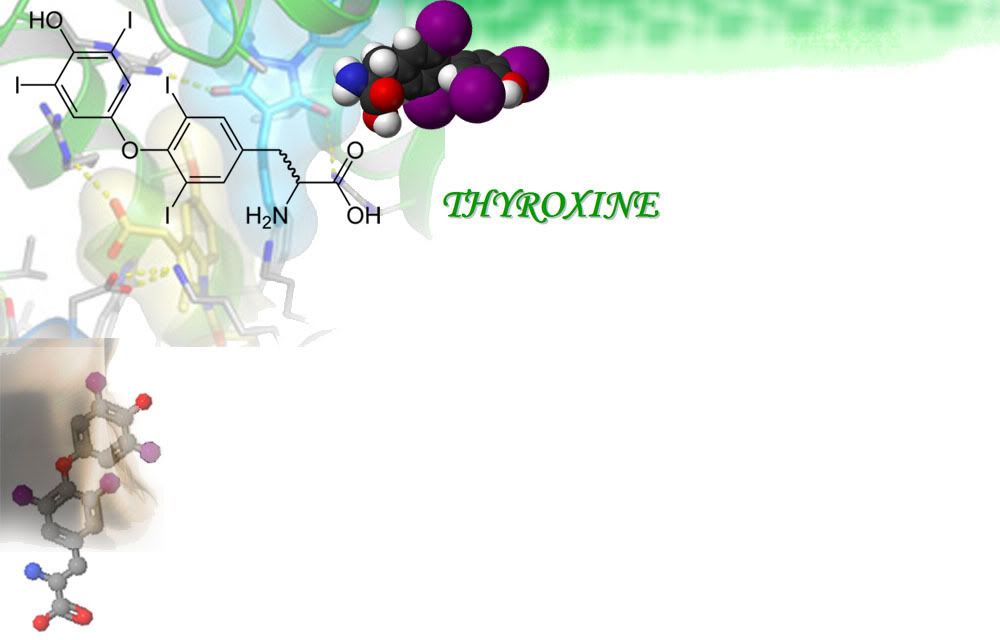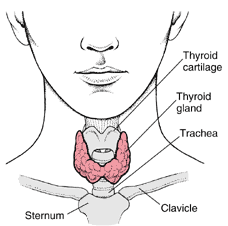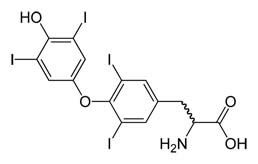
Friday, February 16, 2007
HYPOTHYROIDISM
The "Other Hypothyroidism"
Strong evidence exists to suggest that there may be a number of undiagnosed hypothyroid patients. A growing number of physicians and researchers share this opinion.
Currently available blood tests measure the amount of thyroxine made and released by the thyroid gland. Once I am released into general circulation, most of it is converted to a slightly different biochemical form called triiodothyronine T3. T3, is four times as potent as me in stimulating the cells of the body.
Blood tests can tell us if the thyroid gland is making a normal amount of me, but we do NOT have a blood test that accurately tells us if the body is converting me into T3. It is the T3 that greatly affects cells. There may be a normal amount of me produced and released by the thyroid gland. A blood test will show this. But if the conversion between me and T3 is not taking place in a normal way, the cells may still behave as if they are not receiving enough thyroid hormone! The body will act as if it is hypothyroid, but the blood tests will remain "within normal limits." This phenomenon has been given several names over time. We might call it "hidden hypothyroidism."
How is "Hidden Hypothyroidism" Diagnosed?
There are many physical symptoms, as outlined previously, which suggest hidden hypothyroidism. In addition, a low basal body temperature is quite suggestive. This means that the body temperature is always below the normal 98.6 degrees Fahrenheit. Some people with hidden hypothyroidism never reach 98.0 degrees unless they have a fever. The achilles tendon reflex, basal body temperature, and serum cholesterol may all give additional diagnostic information as to the presence of this type of hypothyroidism. Please remember that this problem is not yet recognized or treated in our conventional medical model.
grow with me 7:45 PMThe "Other Hypothyroidism"
Strong evidence exists to suggest that there may be a number of undiagnosed hypothyroid patients. A growing number of physicians and researchers share this opinion.
Currently available blood tests measure the amount of thyroxine made and released by the thyroid gland. Once I am released into general circulation, most of it is converted to a slightly different biochemical form called triiodothyronine T3. T3, is four times as potent as me in stimulating the cells of the body.
Blood tests can tell us if the thyroid gland is making a normal amount of me, but we do NOT have a blood test that accurately tells us if the body is converting me into T3. It is the T3 that greatly affects cells. There may be a normal amount of me produced and released by the thyroid gland. A blood test will show this. But if the conversion between me and T3 is not taking place in a normal way, the cells may still behave as if they are not receiving enough thyroid hormone! The body will act as if it is hypothyroid, but the blood tests will remain "within normal limits." This phenomenon has been given several names over time. We might call it "hidden hypothyroidism."
How is "Hidden Hypothyroidism" Diagnosed?
There are many physical symptoms, as outlined previously, which suggest hidden hypothyroidism. In addition, a low basal body temperature is quite suggestive. This means that the body temperature is always below the normal 98.6 degrees Fahrenheit. Some people with hidden hypothyroidism never reach 98.0 degrees unless they have a fever. The achilles tendon reflex, basal body temperature, and serum cholesterol may all give additional diagnostic information as to the presence of this type of hypothyroidism. Please remember that this problem is not yet recognized or treated in our conventional medical model.

